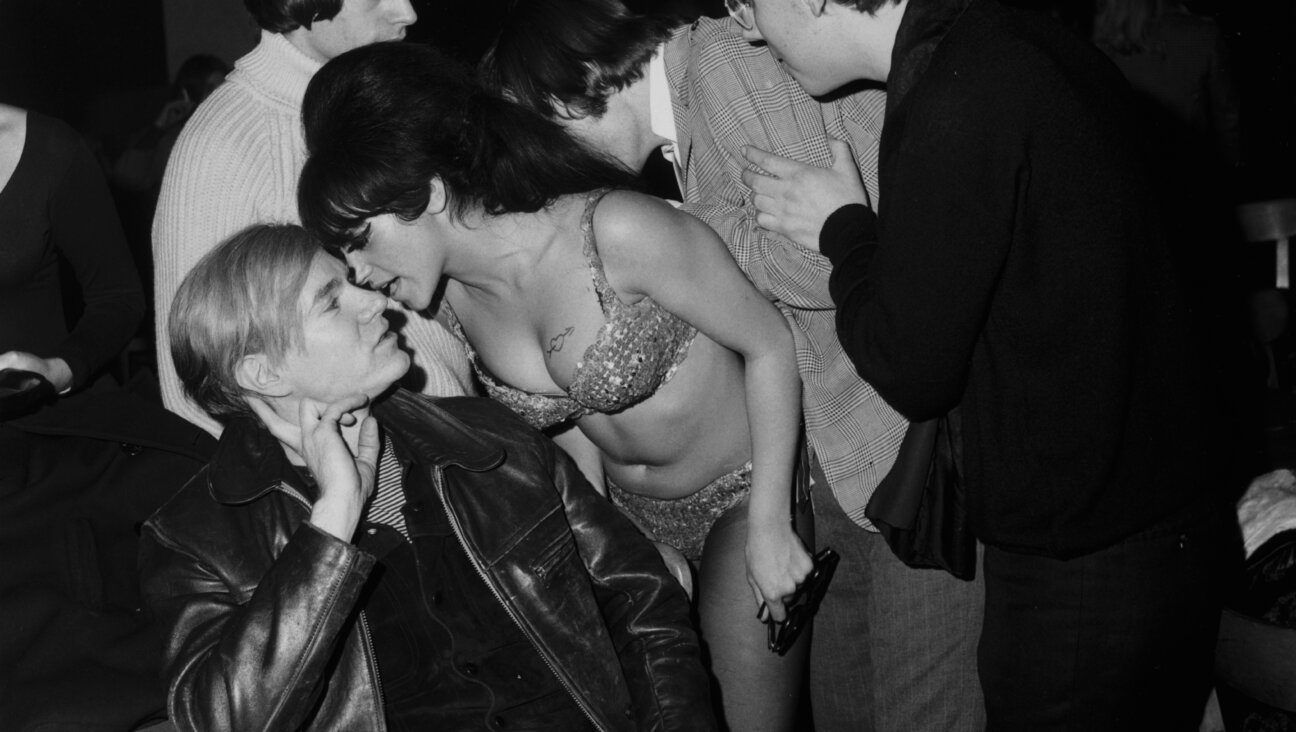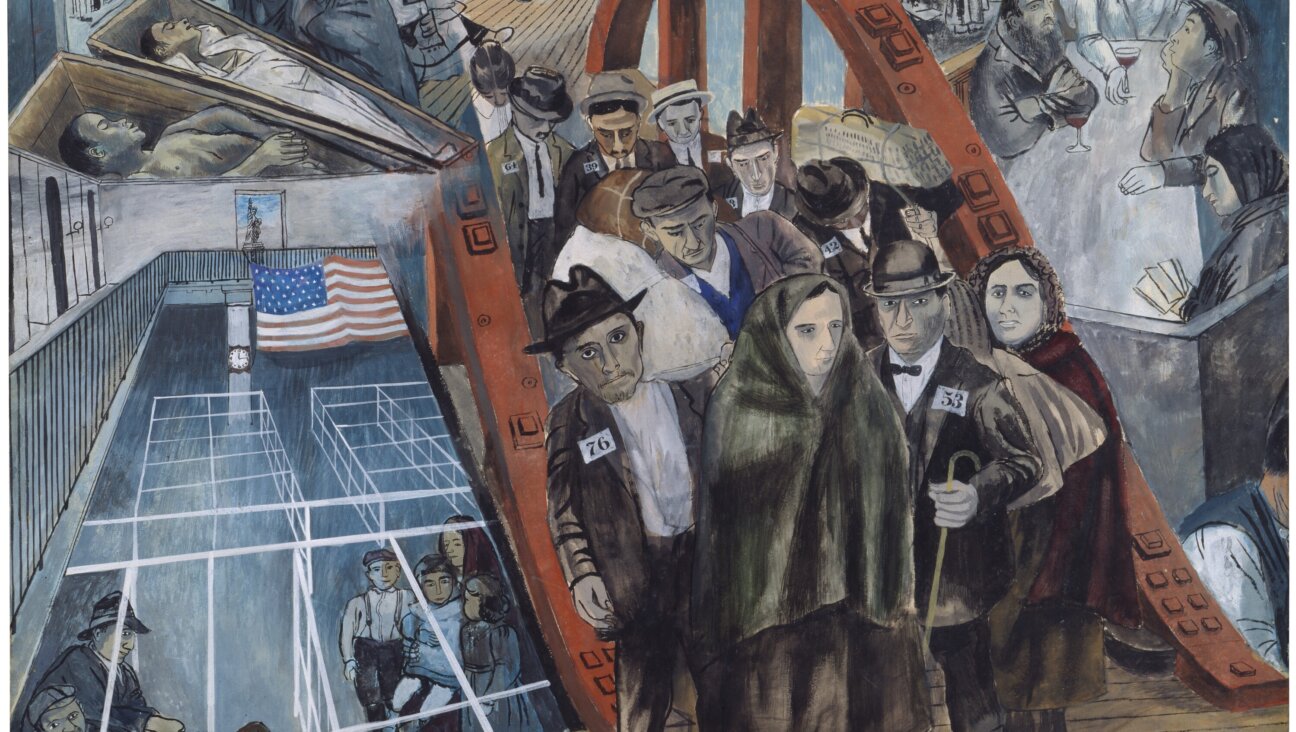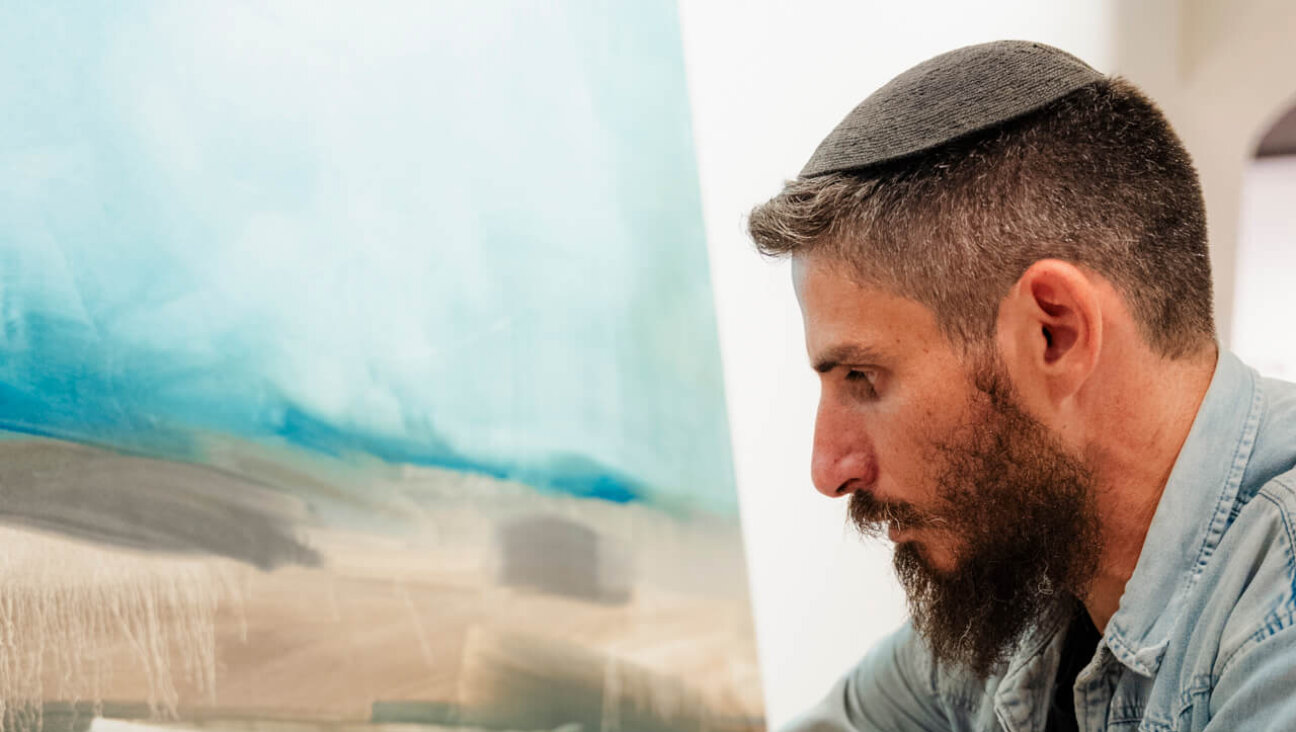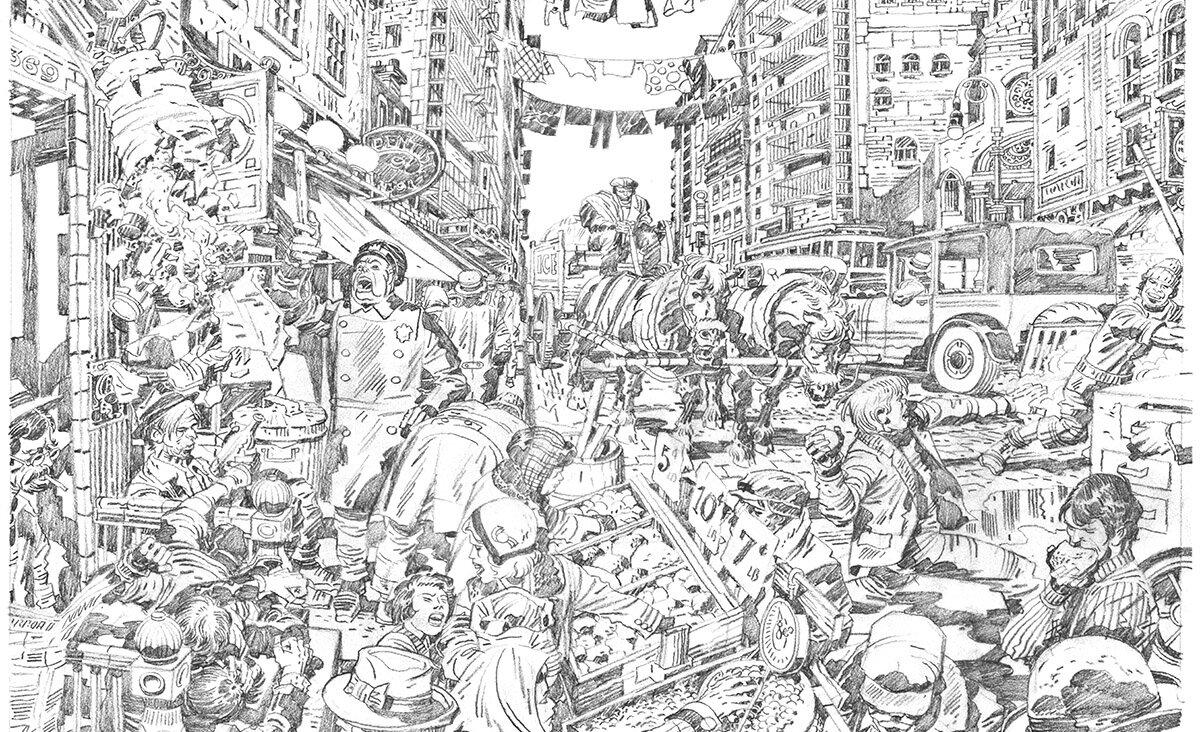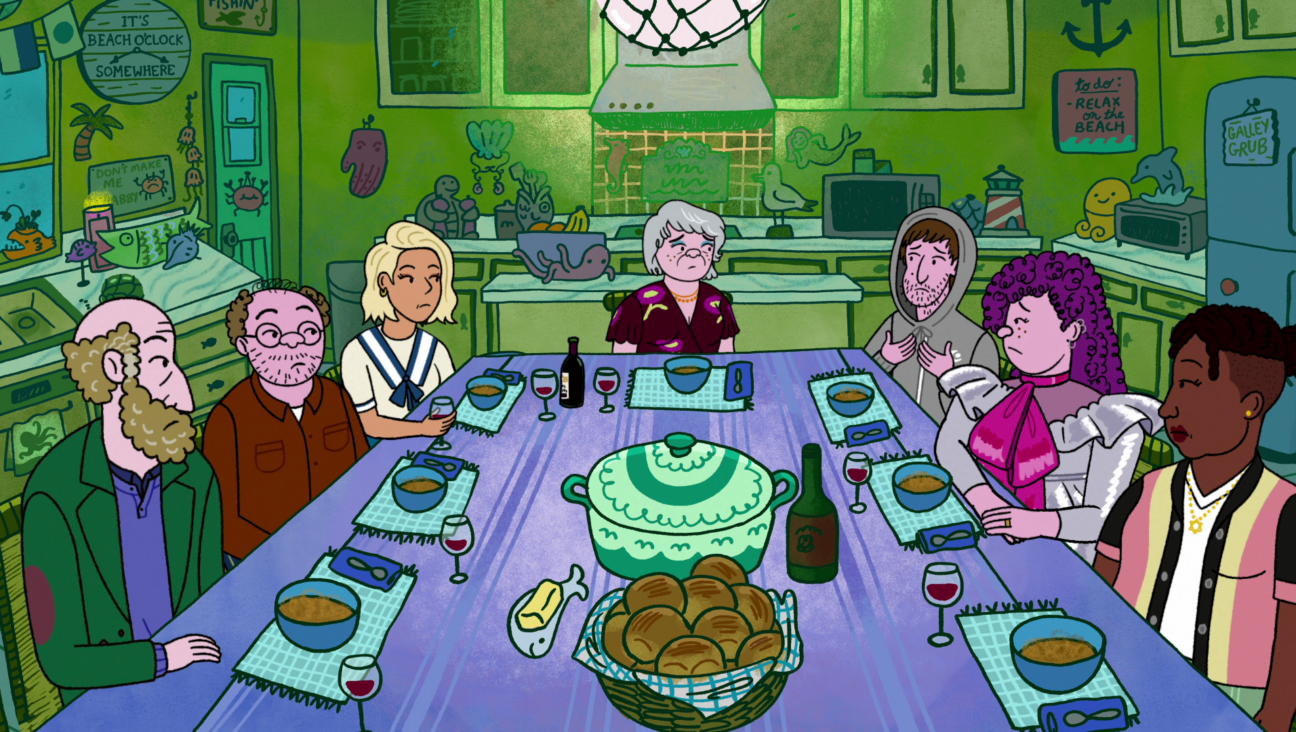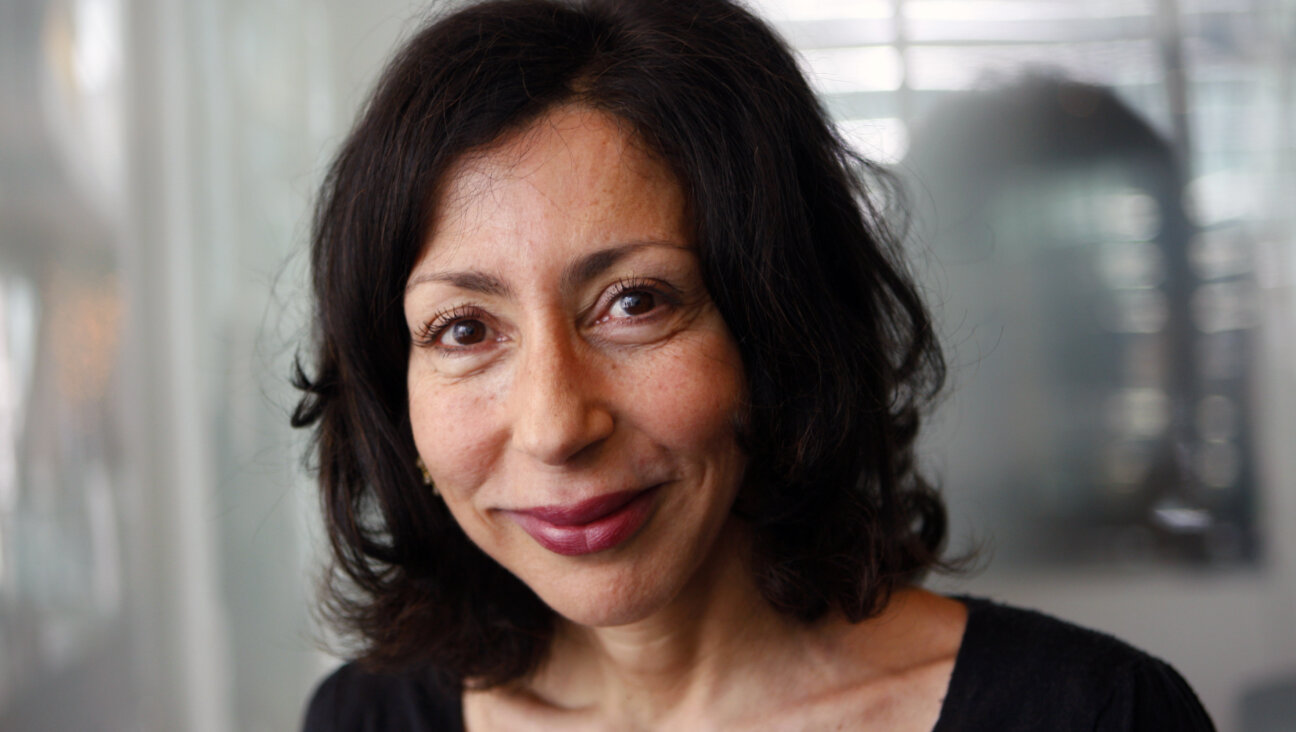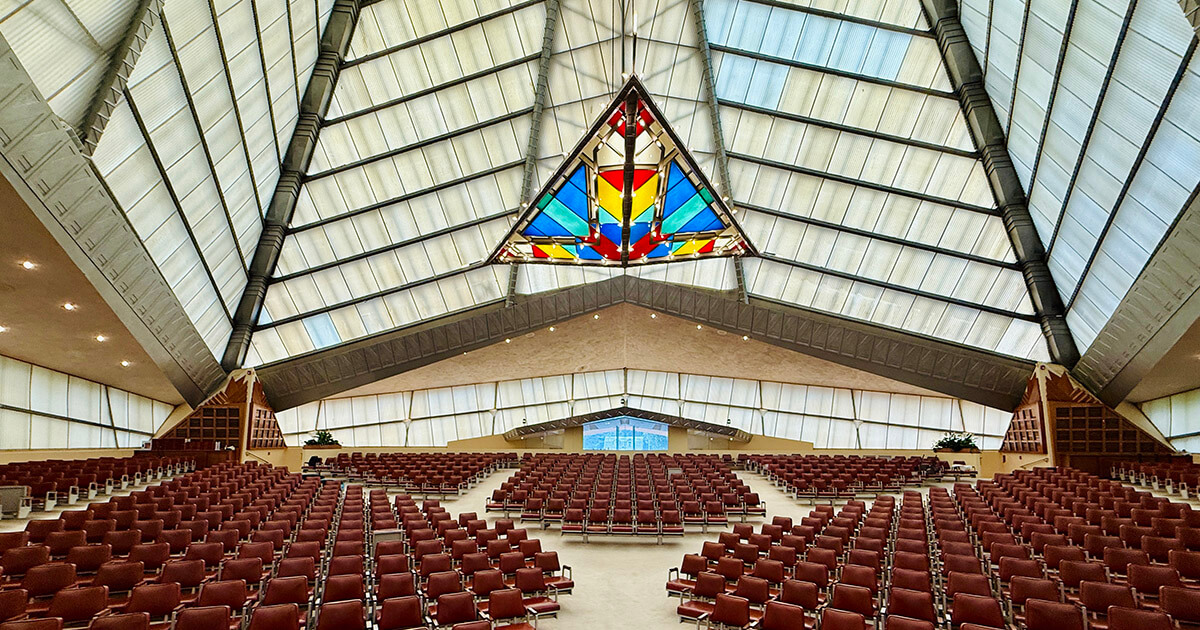Have These Jewish Ghosts Been Haunting New York?

Image by Kurt Hoffman
It’s surprisingly difficult to pinpoint the Jewish ghosts and haunts of New York. Although museum directors and tour guides rack their brains, they often end up stumped. Google searches on “Jewish ghosts New York City” yield no results. Of course, spirits usually seem to be disembodiments of famous figures. Some died tragically of disease, others passed on in old age, but all have a well-known story attached, which are often fed to overpaying tourists and Halloween enthusiasts. The Internet and tour websites are inundated with these tales. But despite the fact that some professionals may not mention it, it turns out that several of the ghosts lurking behind stages and floating through stairwells, were, in fact, Jewish. And a few even still have some fun.
•
From 2009 to 2010, the Belasco Theatre on West 44th Street closed for renovations and one night, a lone plumber found himself working overtime, tinkering on a valve. As he worked, the legs of another man, wearing what appeared to be dress shoes and formal pants and standing behind him, caught his eye. The plumber turned around but saw nothing.
The next day, Tom Stein, who works for the Shubert Foundation, the company that owns the theater, went to inspect the previous night’s work and noticed the valve open. When Stein asked the plumber about it, the plumber insisted he’d closed it tight before he left.
The plumber worked the overtime shift alone again. This time, he saw an electrical cord dangling from a hole in the ceiling slither up through the opening and disappeared.
Afterward, he left quickly and refused to work alone or overtime, even though he had been making between $60 and $75 an hour.
David Belasco was a flamboyant and influential playwright and director who built the Belasco in 1907. When it opened, it was known for being a sensational structure of innovative design, fixed with pulleys, dimmers and an elevator stage so that sets could be raised and lowered.
Belasco, who was Jewish, dressed in priestly robes and earned the nicknames “the bishop of Broadway” and “the wizard of the American theater.” When he died in 1931 at the age of 76, his funeral at Central Synagogue was so well attended that many mourners weren’t able to fit inside.
Soon after Belasco’s death, his ghost began haunting the theater. He was seen wearing a cleric’s collar watching dress rehearsals from a seat in the audience or perched in a box on opening night. People reported hearing the impresario’s personal elevator roar to life and party noises emanate from his apartment.
In a 1975 New York Times article, Archie Thomson, the Belasco’s house manager, claimed that the ghost hadn’t visited the theater since the production of “Oh! Calcutta!” debuted four years prior.
“I’m sure he was around for 20 years,” said Thomson. “Every night after the show I’d go up to do the paperwork, about 2 a.m., and I’d get a very definite sensation, antagonism perhaps, or sadness. Then suddenly it stopped. Whether he was released at last or hated “Oh! Calcutta!” I don’t know.”
The play was notorious for being sexually explicit and, according to Playbill, the theory was that the nudity in the production proved too realistic for Belasco.
The ghost has returned though. Recently, according to Stein, a worker in the apartment, which is now marked by flaking paint and exposed lightbulbs, went to use a power drill but realized it was unplugged. He walked to the outlet around the corner and plugged it in. When he turned it on the second time, it still didn’t work. He again walked over to the outlet and saw it unplugged. Three times this happened. Finally, he addressed Belasco, “I see that you don’t want me here, so I’m leaving.” And as he did, a gray-haired man wearing a long, black dress coat with black flaps appeared.
In the past few years, toolboxes have disappeared, photographs of Belasco have flown off walls and skirted down several flights of stairs and props have repeatedly been found in odd places.
The workers today possess a great respect for the spirit, wary of his sudden flare-ups and seemingly sensitive temper.
An electrician for the Shubert Foundation cautiously questioned whether this article would be positive.
“I don’t want to piss off Mr. Belasco’s ghost!” she said.
Whenever Stein finds himself the last one to switch off the lights and depart for the evening, he addresses the spirit directly and makes sure to refer to him as “Mr. Belasco.”
“I don’t want to tempt fate,” he said.
•
Amada Anderson, a tour guide for Ghosts of New York since 2011, specializes in Greenwich Village, a particularly historical and haunted area of the city, where Edgar Allan Poe and Eleanor Roosevelt once lived.
“I could talk for hours,” Anderson warned at the beginning of a recent tour, during which she challenges attendees to guess details about neighborhood tales, including the yellow fever epidemic that wiped out — nope, no one answered correctly — 20,000 people, whose corpses still lay buried beneath Washington Square Park.
Anderson believes that only people she calls “sensitive,” meaning intuitive — she is one of them — can detect the presence of ghosts. When tour participants claim the flashes of white light that appear in their iPhone photos must be some ghostly spirit, Anderson kindly explains it’s probably the reflection of a street lamp. One time however, a guide quit after an attendee took his photo and a man with a handlebar moustache appeared behind him.
Recently, on an unofficial tour Anderson gave to a “sensitive” friend of hers, she stopped at a landmark that’s not on her usual Village route: the brownstone of the Jewish poet Emma Lazarus.
The two paused on the wide, tree-lined street of West 10th between Fifth and Sixth avenues, where wooden stable barns still exist. Outside number 18, a round blue Landmarks Preservation Commission plaque identifies Lazarus and quotes from “The New Colossus,” famously engraved on the base of the Statue of Liberty.
Give me your tired, your poor,
Your huddled masses yearning to breathe free.
After Anderson’s friend took a picture of the house, he looked at the phone screen and noticed a wispy figure gazing down from a window on the right side of the facade.
At this point in the story, Anderson whipped out her phone and pulled up the picture. She showed it to the group huddled around her, and a man from Tennessee asked, “What’s in the window?”
“Ahhh,” Anderson replied, smiling and nodding. The shadow wore a black dress similar to the plain Victorian one Lazarus wears in old portraits.
Lazarus, who was born in 1849, descended from a Sephardic family that arrived in New York from Portugal around the time of the American Revolution. They were wealthy, as one can guess from their ivied brownstone bordered by a stone balcony, and Lazarus was homeschooled, poring over mythology, poetry and literature.
Judaism became an integral part of her work, particularly in “Songs of Semite,” the first work dedicated to exploring Jewish identity. She often called for others to form a Jewish consciousness, something she tapped into only later in her career.
The Lazarus house is a new stop on the tour, added only after the figure appeared to Anderson and her friend. Later, Anderson poked around for clues, but the person she reached at the property management company told her steam must have soaked the inner panels of the window and couldn’t evaporate.
Maybe — but maybe they just weren’t sensitive enough.
•
On a recent October night, a third-floor apartment just a few doors down from the Lazarus house looked abandoned, a state that now seems permanent at the residence once occupied by Joel Steinberg and his family. The skewed, cheap blinds shut out the darkened room and any hints of activity stirring inside.
In November of 1987, Steinberg, a criminal defense attorney, beat his adopted 6-year-old daughter to death. He served 16 years in prison and was released in 2004.
The address of 14 West 10th Street was known as a spooky site years before the Steinberg case, though, for the 25 ghosts that are said to still wander through the stairwells, the most famous being Mark Twain. Fascination swirled around these spirits, particularly after actress Jan Bryant Bartell chronicled her paranormal experiences living there in her 1974 book “Spindrift: Spray from a Psychic Sea.” It soon garnered the name the House of Death.
But the Steinberg murder cast a truly dark and gruesome shadow on the place. Boroughs of the Dead, another tour company, declined to comment on the case for its “sensitive nature” and avoids the house on its ghost walks.
In 1987, the police responded to an emergency call at the apartment to find Lisa, the daughter, bruised and near death and her brother in “urine soaked clothes and tethered by twine to a playpen in the dark and filthy apartment,” according to the Times. Lisa was taken to the hospital with brain damage where she soon died.
Two years later, during the trial, Steinberg’s mental state was called into question and even later, theories began to emerge that the ghosts in the house possessed him.
“Is it possible that the sick, abusive energies of the immigrant parents from the past took possession of the current residents, forcing them to inflict unspeakable abuse upon innocent children?” asks L’Aura Hladik in “Ghosthunting New York City” specifically referring to Steinberg.
Anderson mentioned a rumor that Steinberg also claimed the ghosts had controlled him.
“I personally just think he’s a jerk,” she said.
•
A few other Jewish spirits and legends have been rumored to haunt their old dwellings, though not as strongly as Belasco or Lazarus. Joe Papp, director and producer at The Public Theater whispers encouragements in actors’ ears. Residents in Irving Berlin’s apartment building have heard the tinkling of the composer’s song, “Oh! How I Hate to Get Up In the Morning.”
The Jewish spirits and legends are a comparatively small group in the pool of New York haunts, but Philip Schoenberg, a Jewish historian and tour guide, doesn’t find it surprising that these people have returned from the dead.
“In the Jewish tradition, the body and the spirit go together,” he said.
Britta Lokting is the Forward’s culture fellow.

